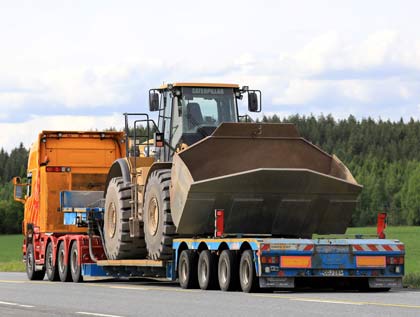Updated: December 31st, 2022
Oversized equipment forms integral parts of construction and other industrial sectors. They help complete tasks more efficiently to save time, money, and other resources. However, moving these machines from one location to another can be challenging because of their size and weight. But worry not, since this article has explained some simple yet effective strategies to streamline this move.
Read on!
1. Work With A Transportation Company
When completing tasks, it can always be tempting to go with the DIY process. And although trying to handle a project is good, sometimes it might be impractical. This is especially true when it comes to the transportation of oversized equipment. For this reason, you should consider partnering with transportation companies.
There are several benefits of hiring a transportation company like Titan Worldwide or any similar service provider to help transport your heavy machines. For one, they’ll come with the right tools. Therefore, you’ll avoid many hassles in finding tracks and other transportation tools.
Transportation companies also know how to organize loads to promote efficiency. They can also use tracking technology to ensure your machines reach their destination quickly and safely. Moreover, with their assistance, you can centralize your focus on the core operations rather than spending or wasting time figuring out how to transport the oversized equipment yourself.

2. Disassemble The Equipment Before Transportation
One of the major issues that come with moving oversized equipment is high transportation costs. If you aren’t careful, they’ll take much of your budget. For this reason, you should find effective ways to minimize transportation costs.
One of the best strategies to reduce transportation costs is disassembling the equipment and machines you want to move. From there, you can load them in shipping containers and transport them in small loans. With this, you can save a lot of money in the long run.
Equipment with large sizes and weights will most likely entail extra shipment costs. With this, you’ll likely spend huge sums of money if you transport them whole. Therefore, consider disassembling and tightly packing your equipment to cut them down to size and reduce shipping costs.
3. Select The Most Suitable Means Of Transportation
Unlike small equipment where you can use any means of transport to move them, you’ve got few options for oversized equipment. Moreover, the method of transportation you choose will depend on various factors, including your budget, time, and the destination of the shipment.
Generally, you can transport your equipment on land or ship it by sea. If you want to save time, the best deal could be to use the road. On the other hand, if time isn’t an issue, you can choose to ship your equipment through sea transportation.
As mentioned, where you want to transport your machines may also dictate which means of transportation to use. For instance, if you’re moving your equipment internationally, it may be best to utilize sea transportation. Nevertheless, whichever method you decide, ensure your vessel has enough weight capacity to hold your equipment safely.
4. Educate Your Team
As noted earlier, one of the options for transporting oversized equipment is to hire experts. However, if you have transportation tracks, you may consider doing the job internally. Both options have their own pros and cons. Nevertheless, whether you hire a transportation company or carry out the transportation with your internal staff, it’s crucial to conduct a briefing and educate your team about the preparations and transportation to equip them with the proper knowledge and skills.
To begin with, if you choose to transport your equipment with your team, you must ensure your drivers are experienced in driving tracks and transporting oversized equipment. Dealing with heavy machines is risky. A small mistake may lead to a major accident which may have costly and devastating consequences such as damaging your equipment or injuries or even loss of lives of those involved in the accident.
Aside from this, you should educate all employees on how to deal with oversized equipment. You should also provide them with protective gear to ensure their safety and protection as they handle the equipment.
5. Enhance Your Communication
Lastly, you may want to improve the communication between everyone involved to ensure a smooth oversize equipment transportation process. If the communication process isn’t streamlined, your equipment may encounter difficulties during transportation, such as getting the shipment delivered to the wrong place. It, therefore, makes perfect sense to ensure you have proper communication to help track the movement of your oversized equipment. One of the ways to achieve this is by installing live chat applications in your business systems.
Takeaway
Some projects like construction will require you to move heavy equipment to the construction site. However, since these machines are heavy, transporting them isn’t always a walk in the park. Therefore, consider implementing the strategies discussed to streamline the process and ensure you deliver your equipment safely.






